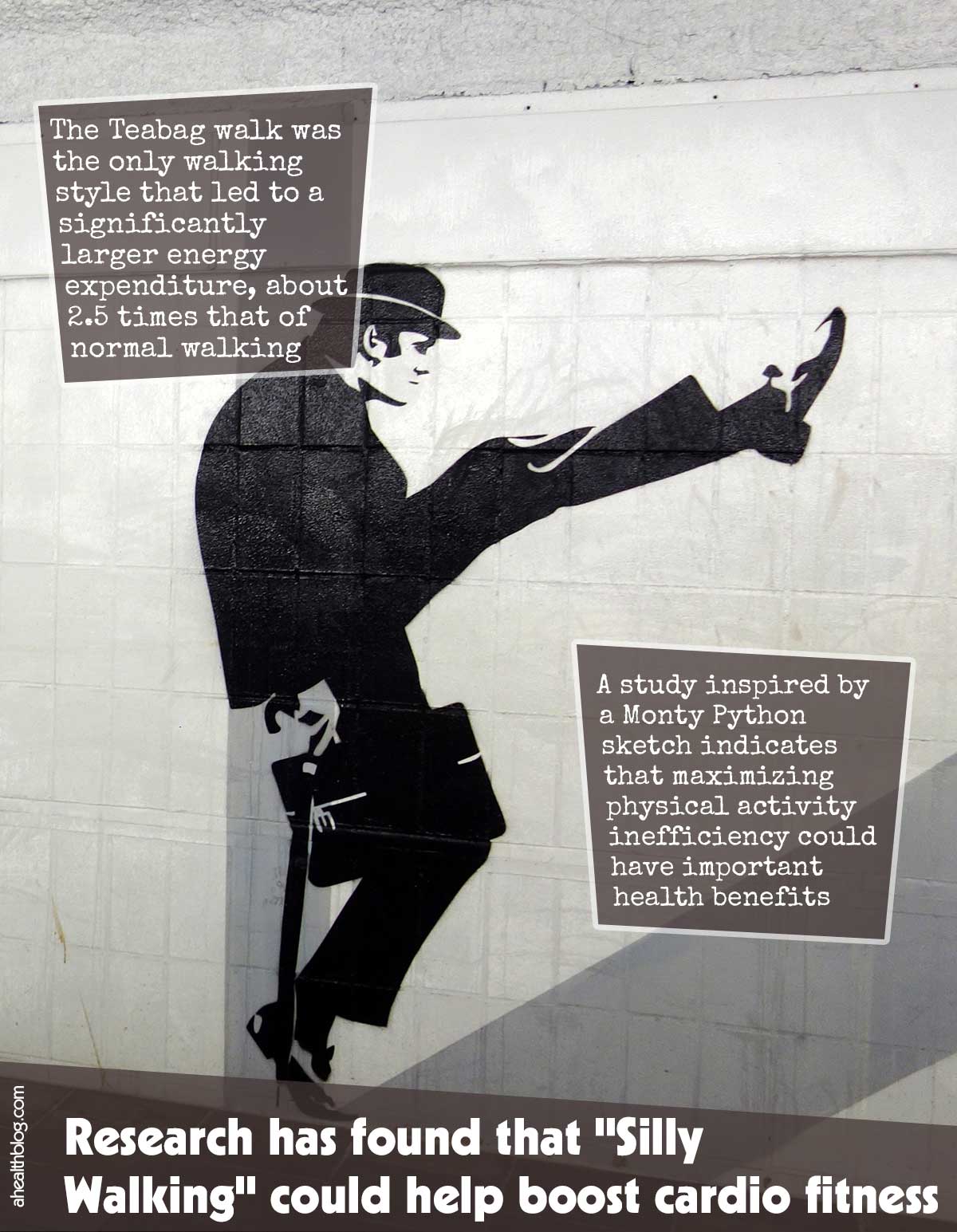A study inspired by a Monty Python sketch indicates that maximizing physical activity inefficiency could have important health benefits. The study observed that individuals could reach physical activity goals by walking inefficiently for only several minutes every day.1✅ JOURNAL REFERENCE DOI: 10.1136/bmj-2022-072833
Physical inactivity rates haven’t improved in the past two decades, in spite of campaigns to increase physical activity and boost cardiovascular fitness.
The inefficient walking styles of Mr. Putey and Mr. Teabag, acted by Michael Palin and John Cleese in Monty Python’s Ministry of Silly Walks sketch, have been demonstrated to be more varied than normal walking, but their energy expenditure hasn’t ever been measured. So researchers compared low-efficiency walking energy expenditure with that of high-efficiency walking.
The study involved 13 healthy men and women between the ages of 22 and 71 with an average age of 34 years and without any known gait disorder and any history of lung or heart disease.
Body weight and height measurements were taken and each individual watched the Ministry of Silly Walks video prior to engaging in 3 walking assessments, each lasting 5 minutes, around an indoor 30-meter course.
The participants walked in their normal style at a freely selected pace In the 1st assessment. For the following 2 assessments, they were instructed to replicate, to the best of their ability, the walks of Mr. Putey and Mr. Teabag they had watched in the video.
Distance covered throughout the 5-minute walks was made use of for calculating average speed. Energy expenditure (kcal/kg/minute), oxygen uptake (mL/kg/minute), and exercise intensity (METs) were also measured. METs are how many calories expended for each minute of physical activity.
The Teabag walk was the only walking style that led to a significantly larger energy expenditure, about 2.5 times that of normal walking.
For women and men combined, oxygen uptake while walking normally was 11.3 mL/kg/min (or 3.2 METs), which was comparable to that of the Putey walk (12.3 mL/kg/minute, or 3.5 METs). The Teabag walk however resulted in an oxygen uptake of 27.9 mL/kg/minute, or 8 METs, which meets the criteria for vigorous intensity exercise.
With regards to energy expenditure, swapping just 1 minute of normal walking with 1 minute of Teabag walking was linked to an increased energy expenditure of 5 kcal/min for women and 8 kcal/min for men.
It was estimated that by walking in Teabag style instead of normal style walking for approximately 11 minutes each day, individuals could accomplish 75 minutes of weekly vigorous intensity physical activity. And replacing normal walking with Teabag walking for approximately 12 to 19 minutes each day would increase energy expenditure every day by approximately 100 kcal.
This amount of Teabag walking style could potentially improve cardiorespiratory fitness, reduce the risk of death, and wouldn’t require any additional time commitment because it replaces higher energy physical activity that individuals already perform.
Short 1 to 2-minute bursts of physical activity accumulated over time can provide cardiovascular benefits and regular bursts of inefficient walking can be performed at one’s convenience.




